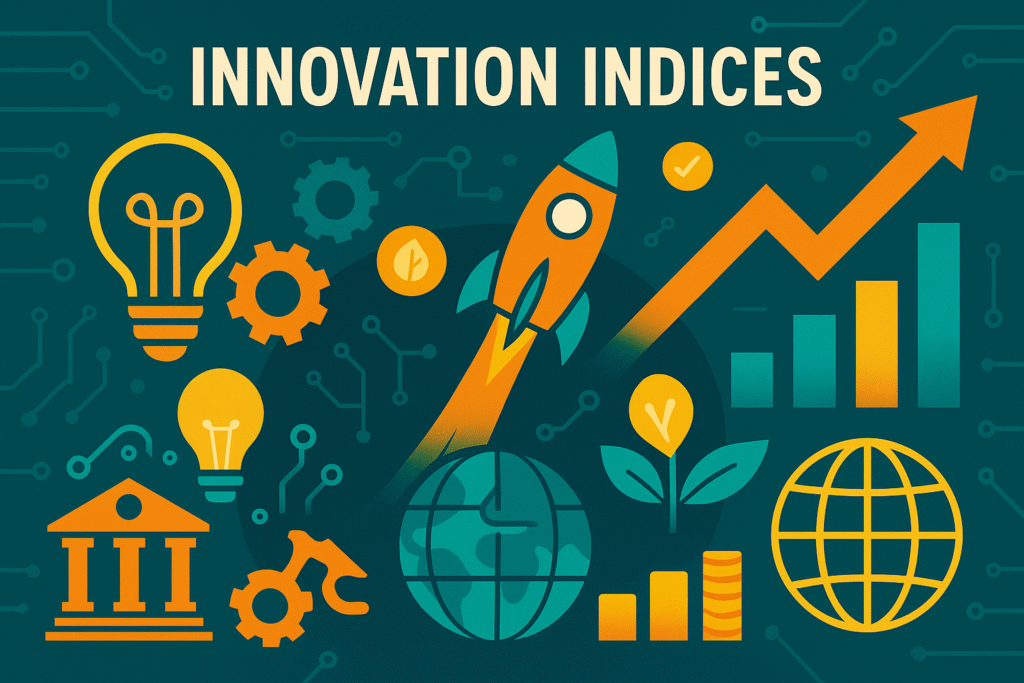The purposeful process of turning novel ideas into value—be it new products, services, business models or processes—so that organisations, economies and societies can solve problems and stay competitive in a changing world.

1. Core Dimensions of Innovation
| Dimension | What It Means | Everyday Examples |
|---|---|---|
| Product Innovation | Introducing new or improved goods | Smartphones with foldable screens |
| Process Innovation | Streamlining how value is created | 3-D printing in aerospace parts |
| Business-Model Innovation | Shifting how revenue is captured | Subscription boxes for groceries |
| Social Innovation | Addressing societal challenges | Micro-finance lending platforms |
Consequently, innovation stretches far beyond R&D labs; it also redesigns workflows, revenue streams and social impact.
2. From Idea to Impact—Typical Stages
- Ideation: Brainstorming, customer co-creation and trend scouting.
- Proof of Concept & Prototype: Rapid testing to verify technical and market feasibility.
- Pilot & Validation: Limited-market roll-outs to fine-tune pricing and usability.
- Scale-Up & Diffusion: Full production, marketing and global distribution—with ongoing iteration.
Each stage reduces uncertainty, thereby increasing the chance of commercial success.
3. Key Drivers
- Technological Breakthroughs: AI, biotech and quantum computing unlock new possibilities.
- Market Pull: Shifting customer needs and demographics create demand for alternative solutions.
- Regulatory Push: Emissions caps and data-privacy laws spur green tech and cybersecurity tools.
- Resource Constraints: Scarcity forces efficiency innovations, such as water-saving agriculture.
- Cultural & Leadership Support: Psychologically safe environments allow teams to test, fail and learn quickly.
4. Measuring Innovation
| Metric | Purpose |
|---|---|
| R&D Intensity (R&D / Sales) | Indicates commitment to discovery |
| Patent Counts & Citations | Proxy for originality and influence |
| Time-to-Market | Gauges process efficiency |
| Adoption Curve (S-Curve) | Tracks market penetration |
| Innovation Revenue Share | % sales from products < 3 years old |
Balanced scorecards combine quantitative and qualitative indicators to avoid tunnel vision.
5. Benefits & Risks
| Benefits | Risks |
|---|---|
| Competitive edge and pricing power | High burn-rate before profitability |
| Productivity and cost savings | Market rejection or technological dead-ends |
| Enhanced brand perception | IP theft and fast-follower erosion |
| Societal progress (health, sustainability) | Ethical dilemmas (e.g., deepfakes, bias) |
Therefore, portfolio-style management—spreading bets across incremental and radical projects—mitigates downside.
6. Emerging Innovation Models
- Open Innovation: Partnerships, hackathons and crowdsourcing accelerate idea flow.
- Corporate Venture Capital: Large firms invest in start-ups to gain option-like exposure.
- Circular Design: Products built for reuse and recycling cut waste and create secondary revenue.
- Digital Twins & Simulation: Virtual replicas shorten prototyping cycles and reduce cost.
7. Looking Ahead
By 2030, analysts expect AI-assisted R&D to compress drug-discovery timelines by 50 %, while additive manufacturing may localise production and slash transport emissions. Moreover, government “moonshot” funds—targeting clean hydrogen and advanced semiconductors—should widen the frontier of what innovation can tackle next.
Key Takeaways
Innovation is the structured pursuit of new value, spanning product tweaks to paradigm-shifting breakthroughs. It thrives on cross-disciplinary collaboration, strong feedback loops and a tolerance for calculated risk. Ultimately, organisations that embed continuous innovation into culture—not just strategy—are better equipped to navigate disruption, seize opportunity and contribute to societal progress.